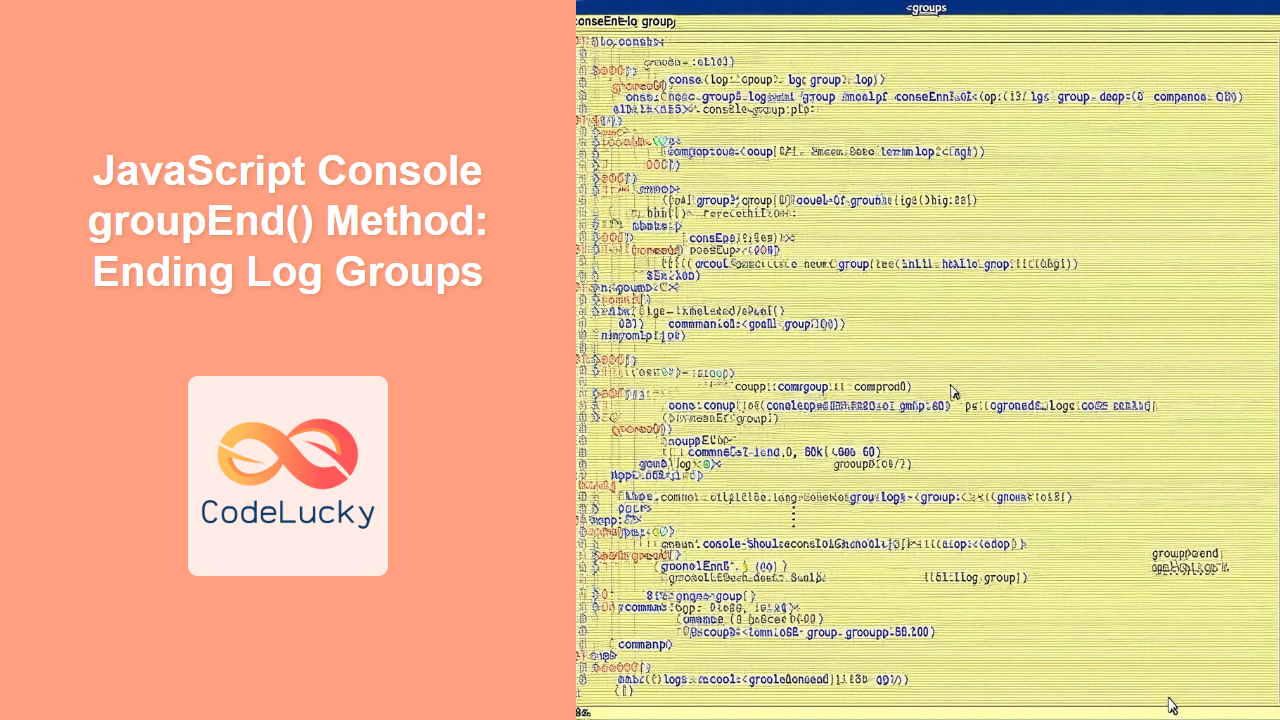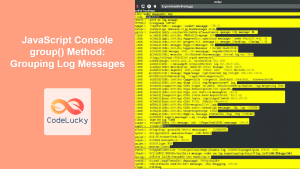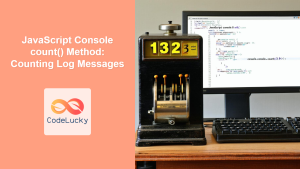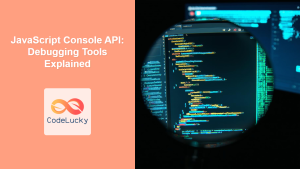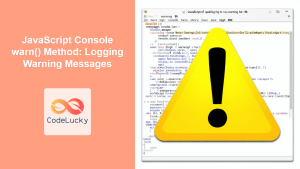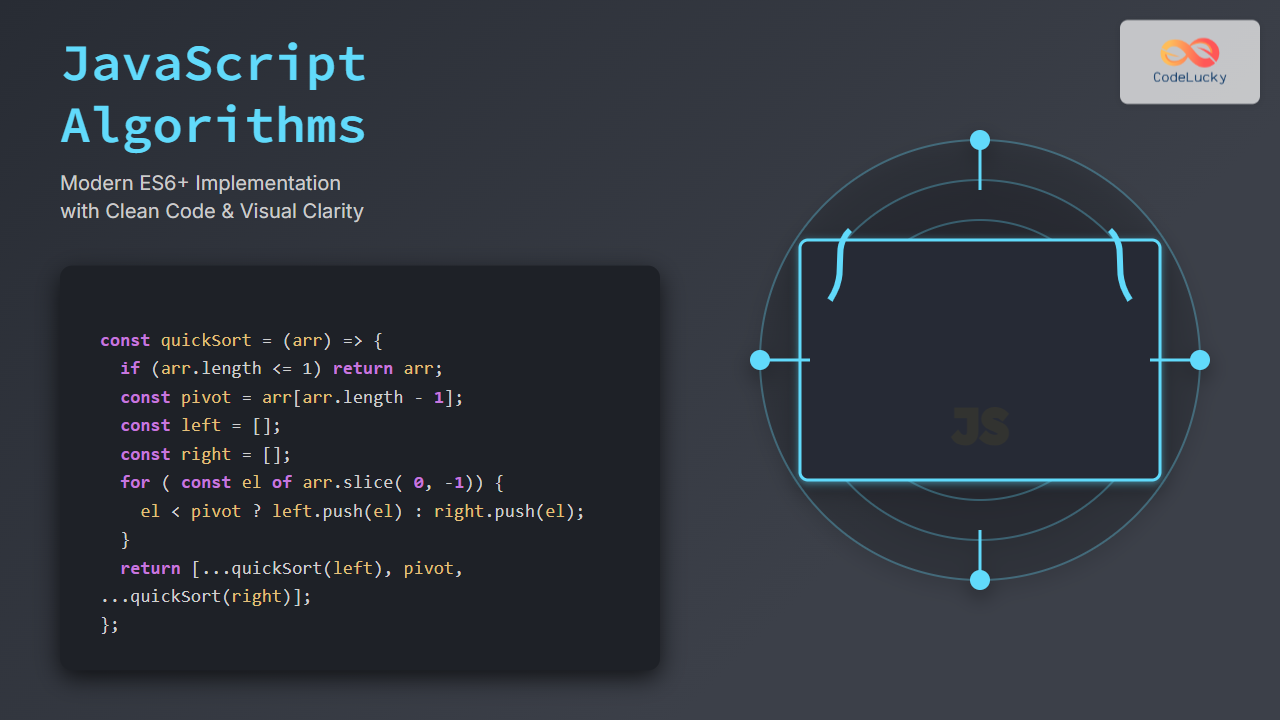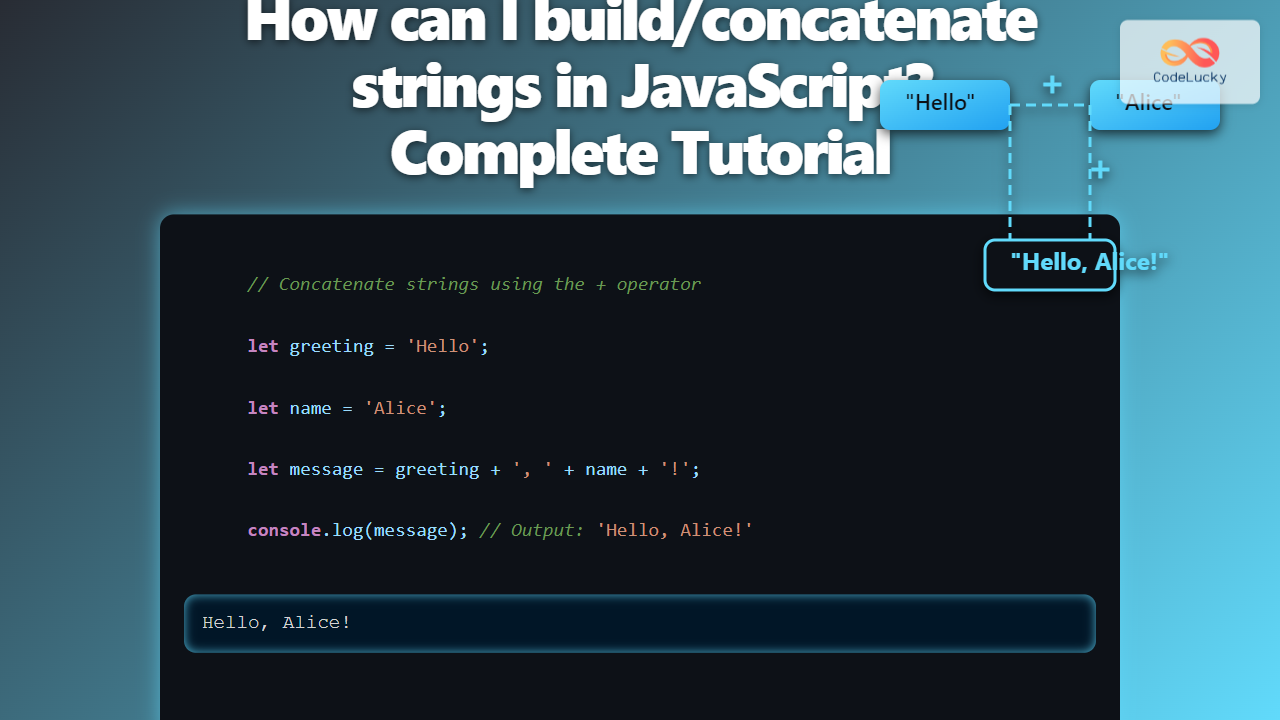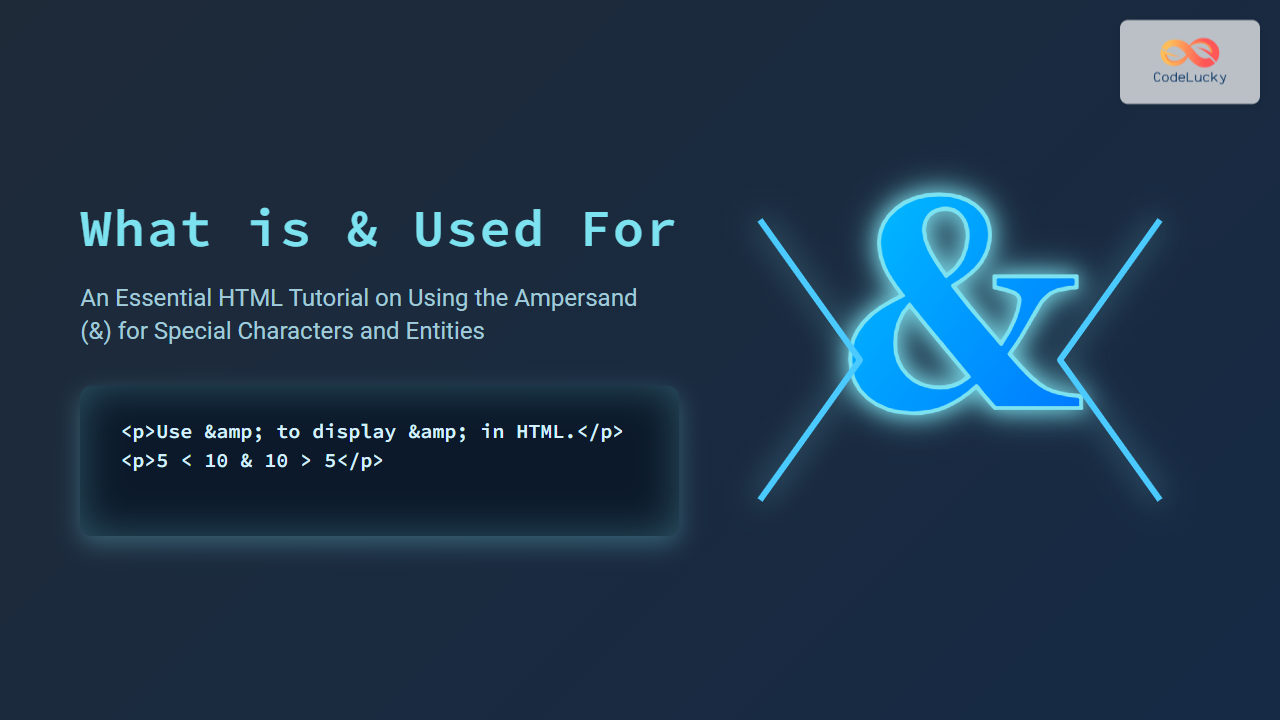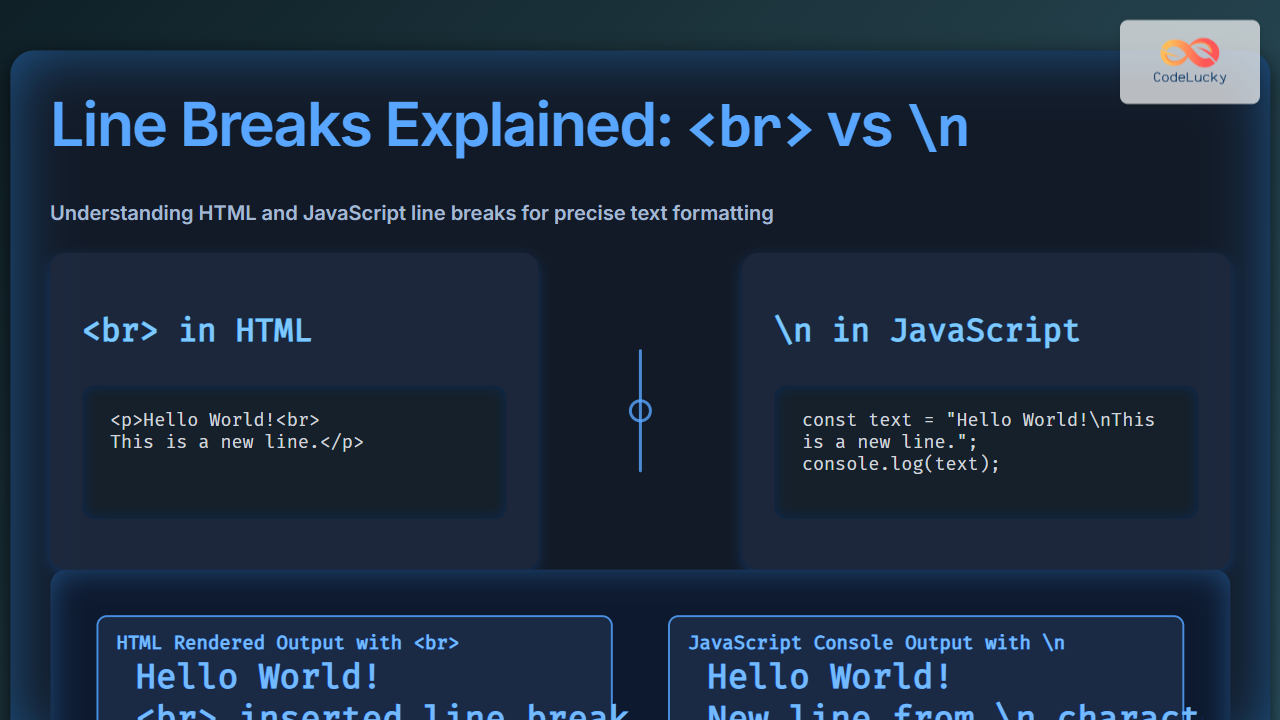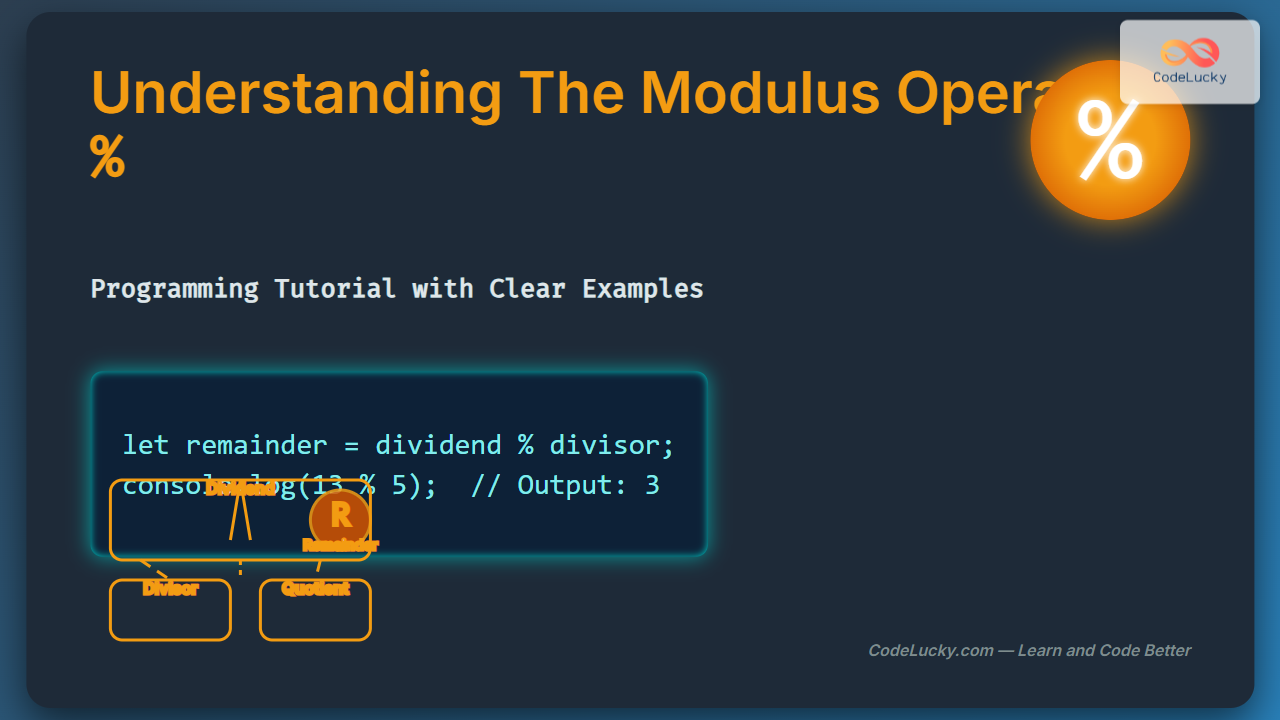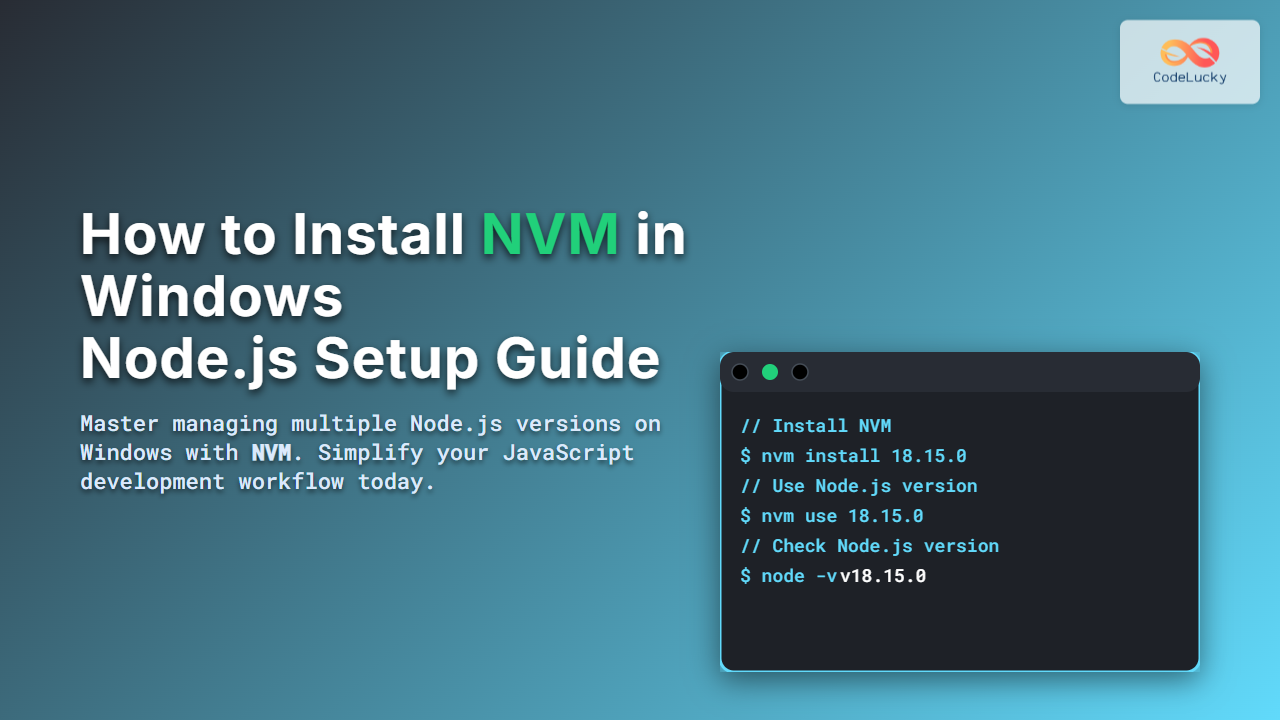JavaScript Console groupEnd() Method: Ending Log Groups
The console.groupEnd() method is a powerful tool in JavaScript for organizing console output by ending a log group. It closes the most recently opened group in the console, making your debugging process more structured and readable. This article will delve into the purpose, syntax, and practical examples of using console.groupEnd().
What is console.groupEnd()?
The console.groupEnd() method is part of the JavaScript Console API. It is used to close a log group that was previously opened with console.group() or console.groupCollapsed(). When console.groupEnd() is called, the console stops indenting subsequent log messages within that group, effectively marking the end of that specific section of the log.
Purpose of console.groupEnd()
The primary purpose of console.groupEnd() is to:
- Structure Console Output: Organize log messages into logical groups, improving readability.
- Enhance Debugging: Make it easier to trace the flow of execution and identify issues within specific sections of code.
- Improve Collaboration: Provide a clearer and more understandable log output for team members.
Syntax of console.groupEnd()
The syntax for using console.groupEnd() is straightforward:
console.groupEnd();
It does not accept any parameters. Its sole function is to close the most recently opened log group.
Practical Examples of console.groupEnd()
Let’s explore several examples of how to use console.groupEnd() effectively in your JavaScript code.
Basic Grouping
This example demonstrates how to create a basic log group and end it using console.groupEnd().
console.group("Basic Group");
console.log("Message inside the group");
console.log("Another message inside the group");
console.groupEnd();
console.log("Message outside the group");
Output:
▶ Basic Group
Message inside the group
Another message inside the group
Message outside the group
Nested Groups
You can nest groups within groups to create a hierarchical log structure. console.groupEnd() closes the innermost group first.
console.group("Outer Group");
console.log("Message in outer group");
console.group("Inner Group");
console.log("Message in inner group");
console.groupEnd();
console.log("Message back in outer group");
console.groupEnd();
console.log("Message outside all groups");
Output:
▶ Outer Group
Message in outer group
▶ Inner Group
Message in inner group
Message back in outer group
Message outside all groups
Collapsed Groups
Using console.groupCollapsed() instead of console.group() creates a group that is initially collapsed. This can be useful for hiding less important log messages by default.
console.groupCollapsed("Collapsed Group");
console.log("Message inside the collapsed group");
console.log("Another message inside the collapsed group");
console.groupEnd();
console.log("Message outside the collapsed group");
Output:
▶ Collapsed Group
Message outside the collapsed group
Conditional Grouping
You can use console.groupEnd() conditionally to close a group only when certain conditions are met.
function processData(data) {
console.group("Processing Data");
console.log("Starting data processing");
if (data && data.length > 0) {
console.log("Data is valid");
// Process data here
} else {
console.warn("Data is invalid");
}
console.log("Data processing complete");
console.groupEnd();
}
processData([{ id: 1, name: "Item 1" }]);
processData([]);
Output for Valid Data:
▶ Processing Data
Starting data processing
Data is valid
Data processing complete
Output for Invalid Data:
▶ Processing Data
Starting data processing
Data is invalid
Data processing complete
Grouping in Loops
Use console.group() and console.groupEnd() to group log messages within loops, making it easier to track each iteration’s output.
const items = [
{ id: 1, name: "Item 1" },
{ id: 2, name: "Item 2" },
{ id: 3, name: "Item 3" },
];
items.forEach((item) => {
console.group(`Item ID: ${item.id}`);
console.log(`Name: ${item.name}`);
console.groupEnd();
});
Output:
▶ Item ID: 1
Name: Item 1
▶ Item ID: 2
Name: Item 2
▶ Item ID: 3
Name: Item 3
Common Mistakes to Avoid
- Unclosed Groups: Forgetting to call
console.groupEnd()can lead to subsequent log messages being incorrectly grouped. Ensure everyconsole.group()orconsole.groupCollapsed()has a correspondingconsole.groupEnd(). ⚠️ - Mismatched Nesting: Ensure that nested groups are properly opened and closed in the correct order. Mismatched nesting can result in confusing console output. 😕
- Over-Grouping: Excessive grouping can clutter the console, making it harder to find relevant information. Use groups judiciously to highlight key sections of your code. 😵💫
Real-World Applications of console.groupEnd()
- Debugging Complex Functions: Grouping log messages within complex functions to trace the flow of execution and identify issues.
- Tracking Asynchronous Operations: Grouping log messages related to asynchronous operations, such as AJAX requests or promises, to monitor their progress and results.
- Logging User Interactions: Grouping log messages related to user interactions, such as button clicks or form submissions, to understand user behavior and identify potential usability issues.
Best Practices for Using console.groupEnd()
- Consistency: Use
console.group()andconsole.groupEnd()consistently throughout your codebase to maintain a uniform logging style. - Descriptive Group Names: Use clear and descriptive names for your log groups to make it easier to understand their purpose.
- Judicious Use: Avoid over-grouping log messages. Use groups strategically to highlight key sections of your code and improve readability.
- Testing: Test your log output to ensure that it is providing the information you need and is easy to understand.
Browser Support
The console.groupEnd() method is widely supported across modern web browsers, ensuring consistent behavior across different platforms. ✅
Conclusion
The console.groupEnd() method is a valuable tool for improving the organization and readability of console output in JavaScript. By using console.groupEnd() in conjunction with console.group() or console.groupCollapsed(), you can create a more structured and understandable logging experience, making debugging and collaboration easier. Happy debugging! 🎉

